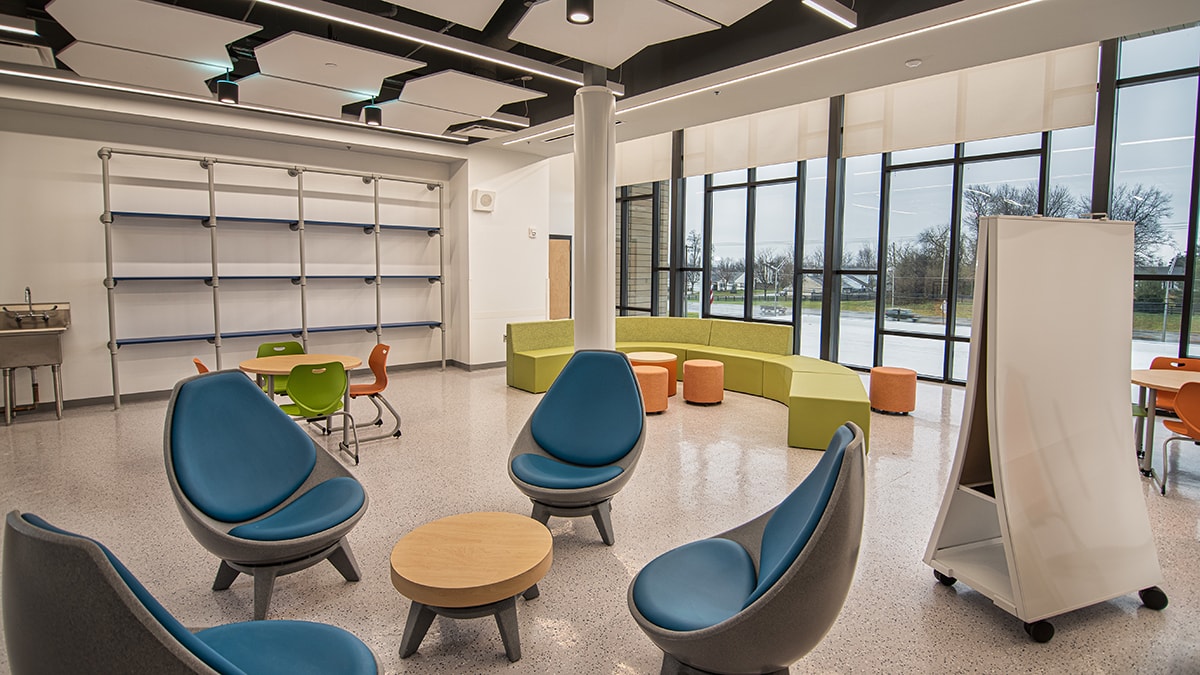“If you want to be a good archaeologist, you have to get out of the library.”
That’s the sage advice of Professor Henry Walton Jones, Jr., better known as Indiana Jones. And it’s good counsel for not just budding archaeologists but students of all kinds.
The Learning Gap
There’s a difference between learning, which often happens organically through experience outside the classroom, and education, where teachers present students with information they’re expected to retain.
Over the past few months, our team at KI conducted observational research in pre-K through third-grade classrooms. We noticed that teachers dedicated a significant portion of the day to playtime, whereby students had the opportunity to create their own learning experiences. Usually, the only rule was, “Don’t hurt yourselves.”
This unstructured time tends to continue through fifth grade. During a free period, some kids might design colorful Lego® sculptures, while others might read manga or magazines.
Free time seems to vanish in middle school. Students spend most of their school days moving from one structured environment to the next. Instruction happens through lectures and textbooks. Even their extracurricular activities grow more regimented. For many students, the information they’re bombarded with goes in one ear and out the other.
When they’re passive recipients of information, students don’t really learn how to try, how to bounce back from failure, how to think critically, how to solve problems independently, how to mediate conflict and so on.
Those are the skills our kids desperately need. When given some measure of control over their time, students of all ages effortlessly craft their own learning experiences.
Perhaps it’s time to start prioritizing learning over education.
Learning in Application
Six-year-olds’ active learning looks noticeably different than that of 24-year-old college graduates. A kindergartner might “make dinner” using a plastic kitchen playset; an adult might tinker with ingredients to perfect a sourdough recipe through trial and error. The basic idea that we learn best through experience holds true across ages.
Offering dedicated free time at school is one way to foster these organic learning experiences. Among younger students, playtime helps with intellectual, social, emotional and physical development.
This is true for older students, too. When teachers at one high school gave students a 15-minute break to play frisbee, do yoga, play music or create art projects, students felt more productive and connected to one other.
School systems are increasingly recognizing the benefits of authentic, self-directed learning experiences and creating time and space for them. While no single approach will fit every learning community, we can look to the following examples for inspiration and insight:
- BrickLAB, a hands-on learning space in Texas, offers educational workshops and programming that allow children to design and build robots; buy, sell and trade bricks; and create stop-motion films.
- The Garage at Northwestern University gives students a place to experiment with new technologies without the pressure of meeting a professor’s expectations. Students can do everything from 3D-print their designs to fly drones with guest lecturers. As The Garage puts it, “Doing is the only curriculum.”
Looking to Our Experiences
The learning experiences that tend to stick with us are those we engineered for ourselves -- the treehouse we built one summer, or the blood drive we conceived of and organized with our peers.
Organic learning can happen at school, too. Indiana Jones has something to teach us, even today.



